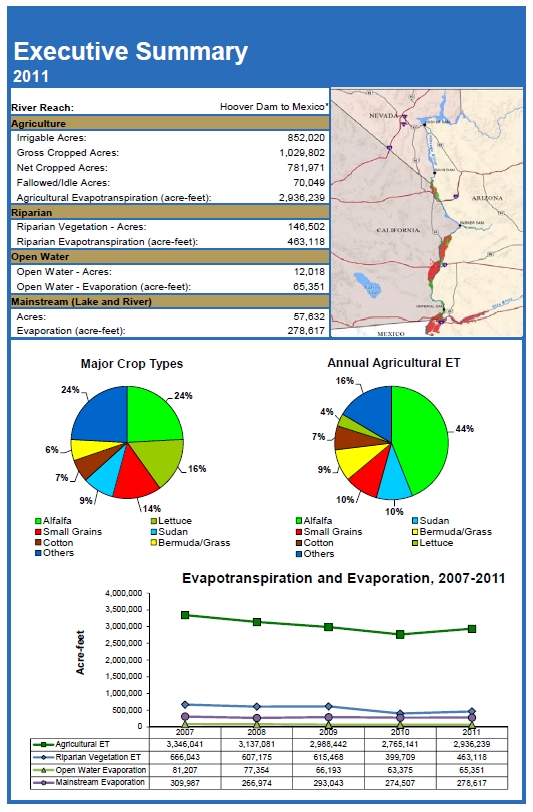The Colorado River is the principal source of water for irrigation and domestic use in Arizona, southern California, and southern Nevada. To account for water use by each State or individual and to verify lands fallowed for conservation programs and other water management needs, the BOR routinely monitors more than 3.5 million acres of agriculture and riparian vegetation along the Lower Colorado River, from Hoover Dam south to the international border with Mexico. Multispectral satellite images are analyzed in combination with other spatial data in a Geographic Information Systems (GIS) environment to generate information regarding crop and riparian types, acreages, and associated water use estimates. These data and information assist the BOR in meeting its U.S. Supreme Court mandate to provide detailed and accurate records of diversions, return flows, and consumptive use estimates of water diverted from the mainstream of the Lower Colorado River. This program is an example of implementing remote-sensing-based methodologies to routinely meet BOR water management needs.
http://www.usbr.gov/lc/region/g4000/wtracct.html

Annual statistics for lands in the Lower Colorado River project area are derived from remote sensing analysis and evapotranspiration (ET) calculation methods to inform management mandates. Various summary graphics created from these statistics are displayed here.

